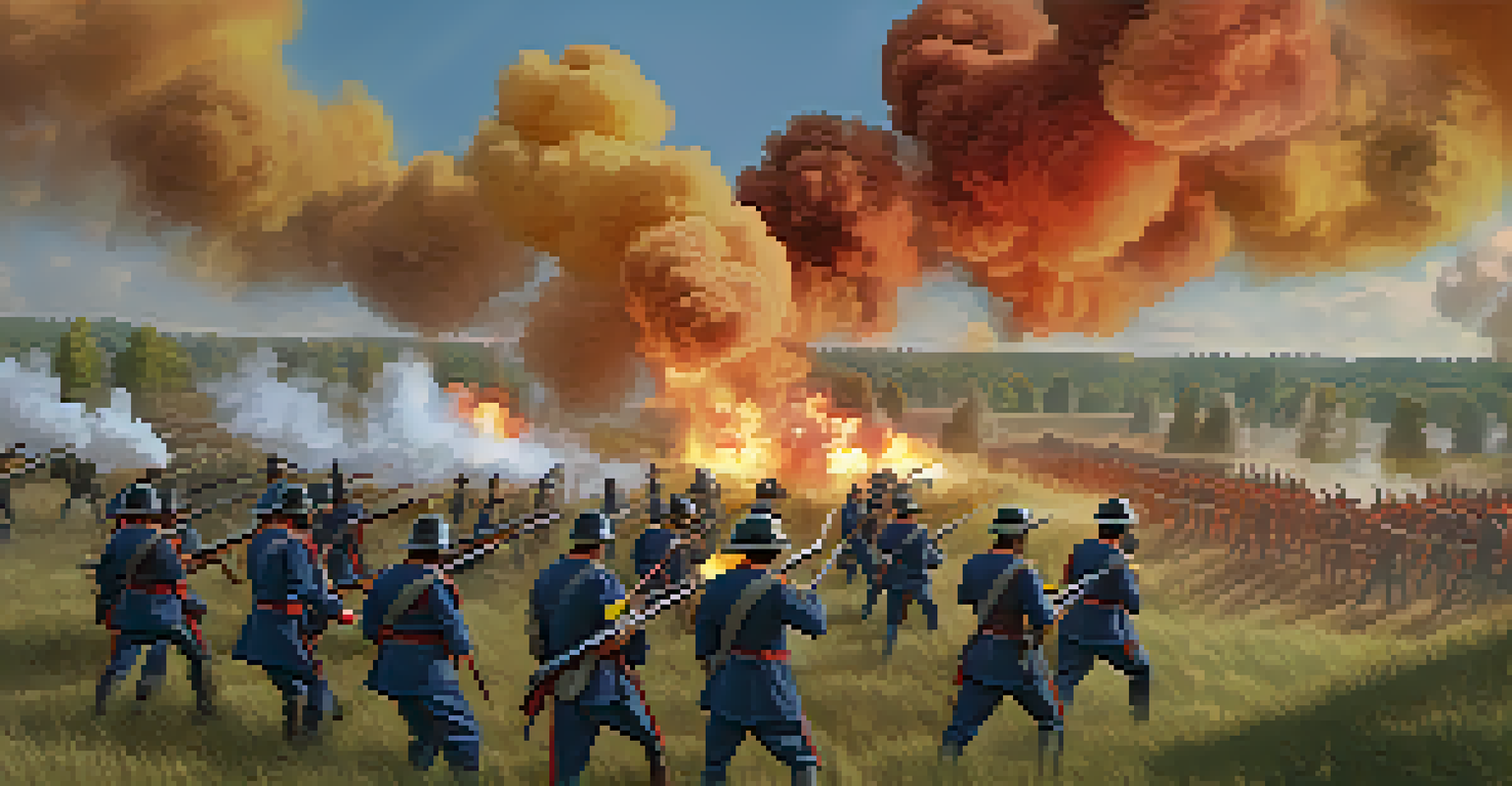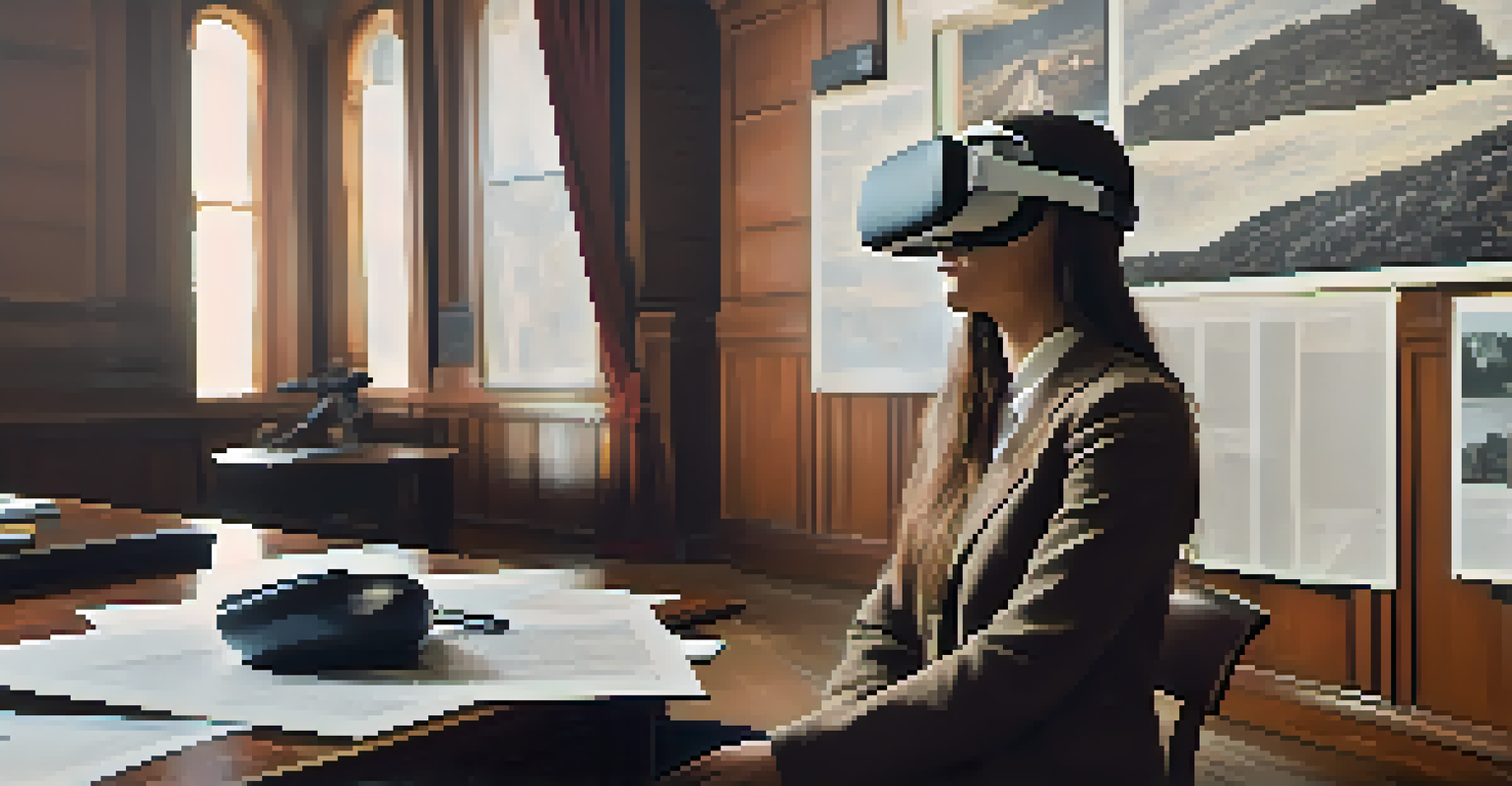Gamifying History Lessons: The Role of VR in Education

Understanding Gamification and Its Impact on Learning
Gamification involves applying game-like elements to non-game contexts, such as education. This approach can transform traditional learning into an interactive experience that captivates students. By incorporating elements like points, badges, and challenges, educators can create an environment where students are more motivated to participate.
Games are the most elevated form of investigation.
For instance, instead of memorizing dates and events from textbooks, students can engage in historical scenarios that require problem-solving and critical thinking. This active participation fosters a deeper understanding of historical contexts, allowing learners to connect the dots between events and their implications.
Ultimately, gamification can make history lessons more appealing, helping students retain information better. When learning feels like a game, students are more likely to immerse themselves in the material, leading to a richer educational experience.
The Rise of Virtual Reality in Education
Virtual Reality (VR) technology has gained traction in recent years, offering immersive experiences that can transport learners to different times and places. In education, VR provides a unique opportunity to explore historical events in a way that textbooks simply cannot. Imagine walking through ancient Rome or standing at the signing of the Declaration of Independence; such experiences can leave lasting impressions on students.

As VR technology becomes more accessible, schools are increasingly integrating it into their curricula. This shift allows educators to use VR as a tool for enhancing engagement and understanding, bridging the gap between theory and practice. Students can interact with historical figures and environments, making history come alive in a way that resonates with them.
Gamification Boosts Student Engagement
Incorporating game-like elements into education transforms traditional learning into an interactive experience that motivates students to participate actively.
Moreover, VR can cater to various learning styles. Visual learners benefit from the rich imagery, while kinesthetic learners thrive on the interactive elements. This adaptability makes VR a versatile addition to any educational setting.
Creating Immersive Historical Experiences with VR
One of the most compelling aspects of VR in education is its ability to create immersive environments. Developers are working to design simulations that accurately depict historical events, allowing students to experience history firsthand. For example, a VR simulation might place students in a battlefield, challenging them to strategize like military leaders did in real-life conflicts.
Education is not the filling of a pail, but the lighting of a fire.
These immersive experiences can lead to a more profound understanding of history. When students can see, hear, and interact with historical elements, they’re more likely to empathize with the people who lived through those times. This level of engagement can spark curiosity and encourage students to explore history beyond the classroom.
Additionally, educators can tailor these experiences to align with specific learning objectives. Whether it’s exploring the Industrial Revolution or the Civil Rights Movement, VR can provide targeted lessons that resonate with students, fostering a deeper connection to the content.
Enhancing Critical Thinking Through Historical Simulations
Critical thinking is an essential skill for students, and VR can significantly enhance this ability through historical simulations. By placing students in scenarios where they must make decisions based on historical context, they learn to analyze information and think critically. For instance, students might be tasked with negotiating a peace treaty, requiring them to weigh different perspectives and outcomes.
These simulations encourage learners to approach history not just as a series of events but as a complex interplay of human decisions and consequences. By engaging in these scenarios, students develop a more nuanced understanding of historical events, making connections that are often overlooked in traditional learning environments.
VR Enhances Historical Learning
Virtual Reality offers immersive experiences that allow students to explore historical events, making learning more engaging and impactful.
Moreover, the collaborative nature of many VR experiences allows students to work together, fostering teamwork and communication skills. As they discuss strategies and outcomes, they learn to appreciate diverse viewpoints, further enriching their educational experience.
Overcoming Challenges in Implementing VR in Classrooms
While the benefits of VR in education are clear, there are challenges to consider when integrating this technology into classrooms. One significant hurdle is the cost associated with purchasing VR equipment and software. Schools must evaluate their budgets and determine how to best allocate resources to ensure that all students can benefit from these experiences.
Another challenge is the need for adequate training for educators. Teachers must be comfortable using VR technology and integrating it into their lesson plans effectively. Professional development opportunities can help educators gain the skills necessary to maximize the potential of VR in their classrooms.
Finally, accessibility is a concern. Not all students may have equal access to VR technology, whether due to financial constraints or physical limitations. Schools must work to find inclusive solutions that ensure every student has the opportunity to engage with this innovative learning tool.
The Future of VR in History Education
As technology continues to evolve, the future of VR in history education looks promising. Developers are constantly working on new content and experiences that will enhance the educational landscape. This continual evolution means that students can look forward to increasingly sophisticated simulations that reflect historical accuracy and depth.
Moreover, as VR becomes more integrated into everyday life, its presence in education will likely expand. Schools may adopt VR as a standard teaching tool, making immersive learning accessible to more students. This shift could revolutionize how history is taught, engaging future generations in ways we can only imagine today.
Challenges of VR in Education
Despite its benefits, integrating VR in classrooms faces hurdles like high costs, the need for teacher training, and ensuring accessibility for all students.
Ultimately, the ability to experience history through VR can foster a lifelong passion for learning. As students engage with the past, they may develop a greater appreciation for their own history and its relevance to the present.
Final Thoughts on Gamifying History with VR
Gamifying history lessons through VR is more than just a trend; it's a significant shift in educational practices that enhances student engagement. By transforming traditional learning methods, VR provides an interactive platform where students can immerse themselves in historical events, making learning more relevant and exciting. This innovative approach not only captivates students but also encourages them to think critically about the past.
As educators embrace these new technologies, they are creating dynamic classrooms where history comes alive. Students leave the classroom not just with facts but with a deeper understanding of the human experience throughout history. This connection to the past can inspire them to be more informed and engaged citizens in the present.

In conclusion, the potential of VR in history education is vast. By gamifying lessons and making history accessible and engaging, we are paving the way for a new generation of learners who are eager to explore the rich tapestry of our shared past.